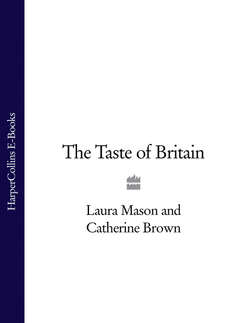Читать книгу The Taste of Britain - Hugh Fearnley-Whittingstall - Страница 87
HISTORY:
ОглавлениеThe Dorset Horn is indeed a Dorset sheep. This sparsely populated area, dominated by rolling chalk hills, has a long connection with the beast. The breed may have evolved from the now-rare Portland, a relic of the old tan-faced primitives once widely known in Britain and centred in the South West (Hall & Clutton-Brock, 1989). Further details are mysterious, although the influence of Merino blood is postulated. For a long time, the Dorset has been favoured for its extended breeding season. This was exploited to provide out-of-season lamb. In the mid-1700s, a manual of husbandry described the production of ‘Dorset House Lambs’ in Essex during late autumn for the London Christmas market. Such meat was associated with status; William Kitchiner (1817) remarked, ‘House lamb is … prized merely because it is unseasonable and expensive,’ and Mrs Beeton (1861) commented on the system of intensive rearing pursued ‘to please the appetite of luxury’. A flock book was established in 1892 and the breed has continued to be valued. The intensive rearing system was abandoned before the First World War, but the Dorset Horn and the relatively new Polled Dorset are still used to provide young, new-season’s lamb.
